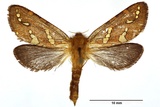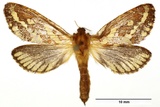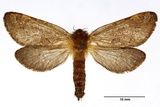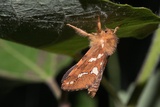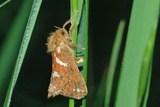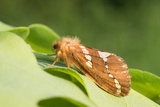Phymatopus hecta (Linnaeus, 1758) Species
Last modified: June 20, 2025, 8:50 p.m.
A not so common and local species throughout Belgium.
This species is considered Vulnerable according to the IUCN Red List category for Flanders 2023.
Details
- Classification
- Family: Hepialidae > Genus: Phymatopus > Species: Phymatopus hecta
- Vernacular names
- Heidewortelboorder (NL), Gold Swift (EN), Hépathique (FR), Heidekraut-Wurzelbohrer (DE)
- First mention in Belgium
- De Sélys-Longchamps E. 1837. Catalogue des Lépidoptères ou Papillons de la Belgique, précédé du tableau des Libellulines de ce pays. — — : 1–29. On page 24 (as Hepialus Hectus). view page
- Status
-
Native
Distribution
Caterpillar
The caterpillar is whitish grey and the skin is wrinkled. The shiny head is maroon-brown and, both dorsally and laterally, there are small gray-brown plates on the thoracal segments. The small stigmata are blackish.
Bionomics
Females of this species scatter their eggs over plants as they fly over them in a suitable biotope. The larva feeds on the roots and subterraneous stem parts of mainly Pteridium aquilinum. In the last instar, it feeds on young shoots at surface level. This species, hibernating twice as a larva, pupates in the ground. It is one of the few species where the males lure the females by spreading a pineapple-like odor.
The adults are active from dusk onwards and later come sparingly to light.
Flight periods
The adults fly from mid-May till the end of July but the main flight period is in June.
Observed on
- Host plant (species):
- Pteridium aquilinum
- Substrates:
- Herbaceous plants
The larva feeds mainly in the roots of Pteridium aquilinum. Also Vaccinium spp. and sometimes other herbaceous plants or grasses are mentioned in literature.
Habitat
This species occurs especially in open forests with an undergrowth of grasses, ferns or dwarf shrubs. It can also be found in thickets, heaths, and rugged grasslands.
